فهرست کلانشهرهای آسیا
این فهرست نمایش دهندهٔ کلانشهرهای قارهٔ آسیا است. توکیو در ژاپن، جاکارتا در اندونزی و دهلی نو در هند ۳ کلانشهر بزرگ این فهرست هستند. همینطور به جز این ۳ شهر، شهرهایی چون تهران، شانگهای، پکن و بمبئی نیز از شهرهای بزرگ این فهرست بهشمار میروند.
گفتنی است در این فهرست ترکیه در آسیا محسوب نشدهاست.
فهرست اصلی
| رتبه | شهر | تصویر | کشور | جمعیت | مساحت (km²) | تراکم (/km²) |
تغییرسالانه (٪/سال) | منابع
جمعیت/ مساحت |
|---|---|---|---|---|---|---|---|---|
| ۱ | توکیو[1] | 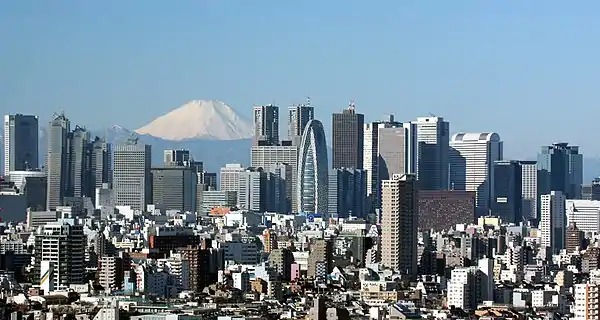 |
۳۹٬۸۰۰٬۰۰۰ | ۷٬۸۳۵ | ۴٬۴۳۰ | ۰٫۱۱ | C / B | |
| ۲ | جاکارتا[2] | 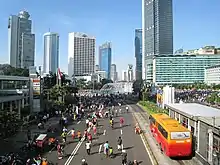 |
۳۱٬۷۶۰٬۰۰۰ | ۲٬۷۲۰ | ۸٬۵۸۰ | ۲٫۳۹ | F / B | |
| ۳ | دهلی [3] |  |
۲۷٬۲۰۰٬۰۰۰ | ۷۷۷ | ۲۶٬۲۵۵ | ۱٫۸۷ | C / B | |
| ۴ | سئول[4] | 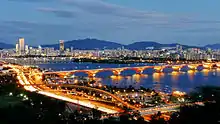 |
۲۴٬۸۰۰٬۰۰۰ | ۱٬۴۲۵ | ۱۳٬۹۲۰ | ۲٫۰۰ | C / B | |
| ۵ | شانگهای[5] | 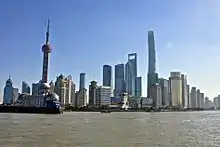 |
۲۴٬۴۸۴٬۰۰۰ | ۱٬۹۴۳ | ۱۰٬۱۲۰ | ۰٫۰۵ | C / B | |
| ۶ | مانیل | 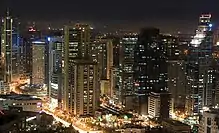 |
۲۴٬۲۴۵٬۰۰۰ | ۹۸۴ | ۱۵٬۵۰۰ | ۱٫۸۵ | A / B | |
| ۷ | بمبئی[6] |  |
۲۳٬۶۰۰٬۰۰۰ | ۲٬۰۷۲ | ۷٬۰۷۰ | ۱٫۴۵ | C / B | |
| ۸ | پکن (بیجینگ)[7] | .jpg.webp) |
۲۱٬۲۴۰٬۰۰۰ | ۱٬۲۹۵ | ۱۰٬۹۹۰ | ۱٫۶۶ | F / B | |
| ۹ | گوانگژو–فوشان |  |
۲۰٬۵۹۷٬۰۰۰ | ۲٬۶۱۶ | ۴٬۸۹۰ | ۱٫۵۱ | C / B | |
| ۱۰ | اوساکا–کوبه–کیوتو |  |
۱۷٬۸۰۰٬۰۰۰ | ۱٬۲۵۶ | ۹٬۰۲۰ | ۱٫۰۳ | E / B | |
| ۱۱ | داکا[8] | .jpg.webp) |
۱۸٬۲۳۷٬۰۰۰ | ۸۸۱ | ۱۰٬۹۷۰ | ۲٫۵۵ | G / B | |
| ۱۲ | بانکوک[9] | 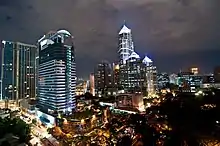 |
۱۷٬۴۰۰٬۰۰۰ | ۳٬۳۰۲ | ۲٬۸۱۰ | ۰٫۱۱ | C / B | |
| ۱۳ | تهران[10] | 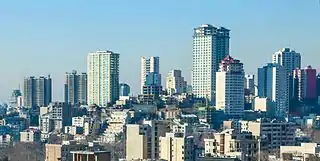 |
۱۷٬۰۰۰٬۰۰۰ | ۲٬۵۳۰ | ۱۲٬۷۷۰ | ۱٫۲۳ | E / B | |
| ۱۴ | کلکته [11] | 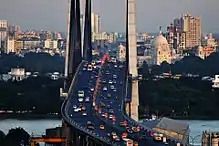 |
۱۶٬۲۰۰٬۰۰۰ | ۱٬۲۹۵ | ۶٬۴۴۰ | ۱٫۴۱ | C / B | |
| ۱۵ | کراچی |  |
۱۴٬۹۱۰٬۰۰۰ | ۱،۵۰۲ | ۵٬۵۵۰ | ۱٫۲۲ | C / B | |
| ۱۶ | چونگکینگ | 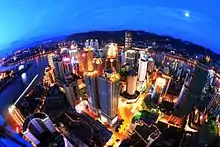 |
۱۳٬۷۴۴٬۰۰۰ | ۶۰۹ | ۱۲٬۱۵۰ | ۱٫۹۴ | A / B | |
| ۱۷ | تیانجین |  |
۱۳٬۲۴۵٬۰۰۰ | ۵۸۳ | ۱۲٬۰۲۰ | ۲٫۶۴ | G / B | |
| ۱۸ | شنزن[7] | 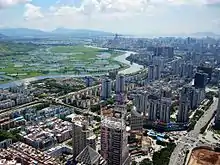 |
۱۲٬۷۷۵٬۰۰۰ | ۲۷۲ | ۲۵٬۷۴۰ | ۰٫۷۹ | E / B | |
| ۱۹ | چنگدو | 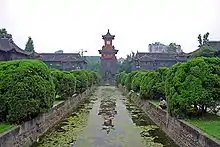 |
۱۱٬۰۵۰٬۰۰۰ | ۷۹۰ | ۸٬۶۳۰ | ۱٫۹۹ | C / B | |
| ۲۰ | بنگلور[12] | 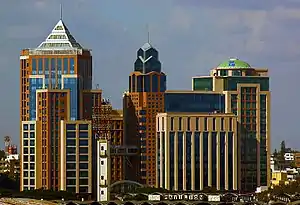 |
۱۰٬۸۰۰٬۰۰۰ | ۴۴۰ | ۱۵٬۰۲۰ | ۰٫۲۳ | D / B | |
| ۲۱ | لاهور[13] | 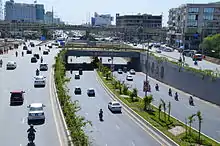 |
۱۰٬۶۶۶٬۰۰۰ | ۷٬۸۳۵ | ۴٬۴۳۰ | ۰٫۱۱ | C / B | |
| ۲۲ | ناگویا[14] | 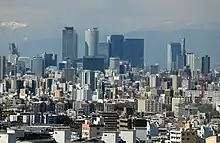 |
۱۰٬۵۰۰٬۰۰۰ | ۲٬۷۲۰ | ۸٬۵۸۰ | ۲٫۳۹ | F / B | |
| ۲۳ | هوشیمین (شهر) [15] |  |
۱۰٬۳۸۰٬۰۰۰ | ۷۷۷ | ۲۶٬۲۵۵ | ۱٫۸۷ | C / B | |
| ۲۴ | چنای (مدرس)[16] |  |
۱۰٬۳۰۰٬۰۰۰ | ۱٬۴۲۵ | ۱۳٬۹۲۰ | ۲٫۰۰ | C / B | |
| ۲۵ | حیدرآباد[17] |  |
۹٬۳۰۵٬۰۰۰ | ۱٬۹۴۳ | ۱۰٬۱۲۰ | ۰٫۰۵ | C / B | |
| ۲۶ | تایپه | 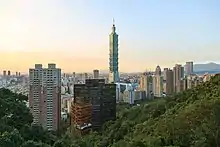 |
۹٬۰۵۰٬۰۰۰ | ۹۸۴ | ۱۵٬۵۰۰ | ۱٫۸۵ | A / B | |
| ۲۷ | هانگژو[6] |  |
۸٬۴۵۰٬۰۰۰ | ۲٬۰۷۲ | ۷٬۰۷۰ | ۱٫۴۵ | C / B | |
| ۲۸ | دونگوان[7] | 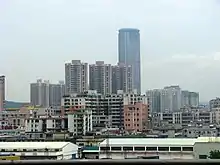 |
۸٬۴۴۲٬۰۰۰ | ۱٬۲۹۵ | ۱۰٬۹۹۰ | ۱٫۶۶ | F / B | |
| ۲۹ | ووهان |  |
۸٬۱۰۰٬۰۰۰ | ۲٬۶۱۶ | ۴٬۸۹۰ | ۱٫۵۱ | C / B | |
| ۳۰ | شنیانگ | ۷٬۹۳۵٬۰۰۰ | ۱٬۲۵۶ | ۹٬۰۲۰ | ۱٫۰۳ | E / B | ||
| ۳۱ | هانوی[18] |  |
۷٬۷۸۵٬۰۰۰ | ۸۸۱ | ۱۰٬۹۷۰ | ۲٫۵۵ | G / B | |
| ۳۲ | احمدآباد[19] | 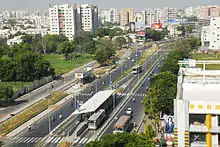 |
۷٬۶۵۰٬۰۰۰ | ۳٬۳۰۲ | ۲٬۸۱۰ | ۰٫۱۱ | C / B | |
| ۳۳ | کوالا لامپور [20] | ۷٬۵۹۰٬۰۰۰ | ۱٬۲۹۵ | ۶٬۴۴۰ | ۱٫۴۱ | C / B | ||
| ۳۴ | هنگ کنگ | 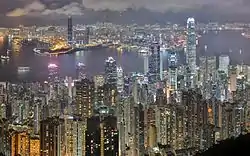 |
۷٬۳۰۰٬۰۰۰ | ۱٬۵۰۲ | ۵٬۵۵۰ | ۱٫۲۲ | C / B | |
| ۳۵ | نانجینگ[21] | 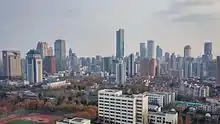 |
۷٬۰۵۰٬۰۰۰ | ۶۳۵ | ۱۲٬۷۷۰ | ۱٫۲۳ | E / B | |
| ۳۶ | ژنگژو–شنگیانگ | ۷٬۰۰۵٬۰۰۰ | ۶۰۹ | ۱۲٬۱۵۰ | ۱٫۹۴ | A / B | ||
| ۳۷ | بغداد | 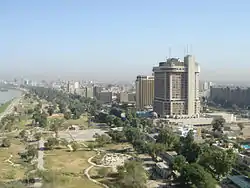 |
۷٬۰۰۰٬۰۰۰ | ۵۸۳ | ۱۲٬۰۲۰ | ۲٫۶۴ | G / B | |
| ۳۸ | سنگاپور[7] |  |
۶٬۹۵۰٬۰۰۰ | ۲۷۲ | ۲۵٬۷۴۰ | ۰٫۷۹ | E / B | |
| ۳۹ | ریاض | _and_the_famous_Kingdom_Tower_.jpg.webp) |
۶٬۹۰۰٬۰۰۰ | ۷۹۰ | ۸٬۶۳۰ | ۱٫۹۹ | C / B | |
| ۴۰ | کوانژو–شیشی–جینجیانگ[22] |  |
۶٬۷۱۰٬۰۰۰ | ۴۴۰ | ۱۵٬۰۲۰ | ۰٫۲۳ | D / B | |
پانویس
- Includes large areas of Tokyo, Kanagawa, Chiba and Saitama prefectures and small areas of Gunma, Tochigi and Ibaraki prefectures. Excludes urban areas of Utsunomiya (۵۰۰٬۰۰۰; ۸۸ km²) and Mito (۵۰۰٬۰۰۰; ۲۴۶ km²).
- Various international sources limit their population estimates to DKI Jakarta itself (the natinal capital district). However, the urbanization of Jakarta extends into the regencies of Tangerang, Bekasi, Bogor and Karawang and the separate cities of Bekasi, Depok and Bogor. Demographia continues to use the “Jakarta” name instead of Jabodetabek because of its familiarity.
- Includes Kalyan, India, Bhiwandi and Panvel. A large part of the municipality of Mumbai is rural, composed of the Sanjay Gandhi National Park and thus not included in the urban area.
- Includes Faridabad, Ghaziabad, Noida and Gurgaon.
- Includes satellite cities in Gyeonggi Province such as سوون, گویانگ, سئونگنام, بوچئون and آنسان which are treated as separate urban agglomerations by the United Nations.
- Shanghai, Hangzhou, Suzhou, Nanjing and Changzhou are treated as separate urban areas which constitute the دلتای رود یانگ تسه economic zone. Urban areas of شاوشینگ (۶۰۰٬۰۰۰; ۲۵۴ km²) and Zhuji (۵۰۰٬۰۰۰; ۱۰۴ km²) within the prefecture-level city of Shaoxing, Kunshan-تایکانگ (۸۷۵٬۰۰۰; ۴۰۱ km²) within the prefectrual level city of Suzhou, Huangyan (۵۰۰٬۰۰۰; ۶۵ km²) and Taizhou (۳۵۰٬۰۰۰; ۴۱ km²) within the prefectrure-level city of Taizhou, ووشی (۱٬۶۵۰٬۰۰۰; ۳۸۹ km²), نانگبو (۱٬۵۰۵٬۰۰۰; ۵۷۰ km²), یانگژو (۶۷۵٬۰۰۰; ۴۹ km²), جیشانگ (۶۷۵٬۰۰۰; ۱۳۰ km²), هوجا (۶۴۵٬۰۰۰; ۱۱۱ km), نانتانگ (۶۰۵٬۰۰۰; ۸۵ km²) and جنجیانگ (۴۸۰٬۰۰۰; ۳۶ km²) are also excluded.
- Hong Kong in the Hong Kong Special Administrative Region and Shenzhen are treated as separate urban areas because of the lack of freedom of labor movement without trade, immigration or customs barriers. Guangzhou–Foshan, Shenzhen and Dongguan are also treated as separate urban areas which constitute the Pearl River Delta economic zone. Likewise, urban areas of ژیانگمن–شینهوی (۹۳۰٬۰۰۰; ۱۳۰ km²) and تایشان (۳۵۰٬۰۰۰; ۲۱ km²) within the prefecture-level city of Jiangmen, هویژو–Huiyang (۹۰۰٬۰۰۰; ۹۳ km²) within the prefecture-level city of Huiyang, جوهای (۵۳۰٬۰۰۰; ۱۱۷ km²), ژونگشان (۴۱۰٬۰۰۰; ۱۳۰ km²) and ژاوکینگ (۳۱۰٬۰۰۰; ۴۱ km²) as well as urban area of ماکائو (۵۲۵٬۰۰۰; ۲۳ km²) in the Macau Special Administrative Region are excluded. Population estimates for Shenzhen and Dongguan are based upon press and other reports on the actual popuation, since the national census excludes millions of residents who do not have permanent resident status.
- The population is lower than other estimates (such as the United Nations), which include metropolitan area population not within the continuously developed urban area.
- Includes Toyohashi.
- Excludes urban area of Karaj (۱٬۴۹۵٬۰۰۰; ۱۴۵ km²).
- The population is lower than other estimates (such as the United Nations), which include metropolitan area population not within the continuously developed urban area. The Demographia population estimate is a “build-up” of sub-municipality population within the continuously developed area (urban area or agglomeration). Excludes urban area of Tangshan (۱٬۶۶۵٬۰۰۰; ۲۷۷ km²).
- The population is higher than other estimates (such as the United Nations), which do not include all population within the continuously developed urban area (especially in New Taipei City). Excludes urban area of Taoyuan–Jhongli (Chungli) (۱٬۷۱۵٬۰۰۰; ۴۱۴ km²).
- Includes large areas of Tokyo, Kanagawa, Chiba and Saitama prefectures and small areas of Gunma, Tochigi and Ibaraki prefectures. Excludes urban areas of Utsunomiya (۵۰۰٬۰۰۰; ۸۸ km²) and Mito (۵۰۰٬۰۰۰; ۲۴۶ km²).
- Various international sources limit their population estimates to DKI Jakarta itself (the natinal capital district). However, the urbanization of Jakarta extends into the regencies of Tangerang, Bekasi, Bogor and Karawang and the separate cities of Bekasi, Depok and Bogor. Demographia continues to use the “Jakarta” name instead of Jabodetabek because of its familiarity.
- Includes Kalyan, India, Bhiwandi and Panvel. A large part of the municipality of Mumbai is rural, composed of the Sanjay Gandhi National Park and thus not included in the urban area.
- Includes Faridabad, Ghaziabad, Noida and Gurgaon.
- Includes satellite cities in Gyeonggi Province such as سوون, گویانگ, سئونگنام, بوچئون and آنسان which are treated as separate urban agglomerations by the United Nations.
- The population is lower than other estimates (such as the United Nations), which include metropolitan area population not within the continuously developed urban area.
- Includes Toyohashi.
- The population is lower than other estimates (such as the United Nations), which include metropolitan area population not within the continuously developed urban area. The Demographia population estimate is a “build-up” of sub-municipality population within the continuously developed area (urban area or agglomeration). Excludes urban area of Tangshan (۱٬۶۶۵٬۰۰۰; ۲۷۷ km²).
- Excludes urban area of کرج (۱٬۴۹۵٬۰۰۰; ۱۴۵ km²).
- The population is higher than other estimates (such as the United Nations), which do not include all population within the continuously developed urban area (especially in New Taipei City). Excludes urban area of Taoyuan–Jhongli (Chungli) (۱٬۷۱۵٬۰۰۰; ۴۱۴ km²).
This article is issued from Wikipedia. The text is licensed under Creative Commons - Attribution - Sharealike. Additional terms may apply for the media files.